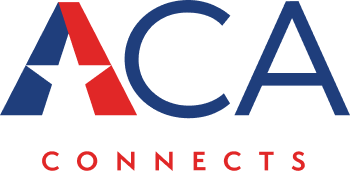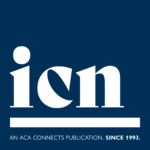- AdvocacyAdvocacy
We are the premier association delivering high-impact advocacy for independent broadband, video and communications providers.
Supporting Congressional Candidates that Drive Telecommunications
Connecting You to Congress!
- EducationEducation
We are the premier association delivering high-impact advocacy for independent broadband, video and communications providers.
Regulatory NewsWhite Paper - Closing the GapsClosing the Gaps
Through self-funded initiatives as well as participation in government programs, ACA Connects Members are helping to ensure that all households in their communities can enjoy the benefits of broadband, regardless of income.
The series underscores the importance of letting ACAC Members explain local market challenges in their own voice, allowing them to connect with regulators and lawmakers in a personal and authentic way.
The Affordable Connectivity Program is an FCC program to help households struggling to pay for internet service during the pandemic. This new benefit will connect eligible households to jobs, critical healthcare services, and virtual classrooms.
ACA Connects is pleased to join with Education Super Highway in supporting the K-12 Bridge to Broadband Program, a new initiative to help connect students to broadband for remote learning.
- News & MediaNews & Media
ACA Connects is an active participant in the legislative and regulatory process in Washington, D.C. The activities of ACA Connects and its Members are covered extensively by the media – print, electronic and digital.
ACA Connects Members are an important part of their communities. In addition to delivering reliable and affordable video and broadband services, they often lead initiatives that provide a helping hand to their neighbors and friends.
ICN is an all-digital magazine created by ACA Connects with content specifically curated for ACA Connects Members, including articles from ACA Connects Leaders, ACA Connects Member stories, insightful information from current Associate Members, and more.
News & MediaACA Connects is an active participant in the legislative and regulatory process in Washington, D.C. The activities of ACA Connects and its Members are covered extensively by the media – print, electronic and digital.
ICN is an all-digital magazine created by ACA Connects with content specifically curated for ACA Connects Members, including articles from ACA Connects Leaders, ACA Connects Member stories, insightful information from current Associate Members, and more.
- Events
Addressing Gaps in Broadband Infrastructure and Service Adoption
A Framework to Guide Policymakers
As Congress and the Biden Administration discuss the appropriate level of broadband funding to ensure every American has access to the opportunities afforded by high-speed internet, it is paramount that they evaluate potential outcomes using the latest, most accurate data. In our new report, Addressing Gaps in Broadband Infrastructure Availability and Service Adoption: A Cost Estimation & Prioritization Framework, we provide lawmakers with the tools they need to address this pressing issue most effectively.
Unlike previous reports of this kind, our report analyzes the latest FCC deployment data available (June 2020), and enhances this analysis by incorporating estimates for locations in partially served census blocks, as well as businesses and anchor institutions. Our framework then determines the cost to deploy gigabit broadband to all “unserved” locations in the country using different performance thresholds to define an “unserved” area. Furthermore, our report assesses the cost to fund adoption programs for low-income households over various program participation rates and durations.
Policymakers can use our report as a framework to evaluate what can be achieved with various levels of spending, as well as what it would take to achieve more ambitious proposals, like establishing universal gigabit broadband service.
Problem: The Broadband Availability and Adoption Gaps
Our report finds that although gigabit availability has increased by 50 percent over the last three years, households that lack 100/20 Mbps service have declined by only 3 percentage points over the same period.

In addition to households known to be unserved to the FCC, our report shows there are an additional estimated 8.2 million households in census blocks reported as “served” that do not have broadband service available. Approximately 12 million households in total, inclusive of these 8.2 million households, do not have access to a baseline level of service.
The broadband adoption gap is a an equal, if not greater, barrier. Today, 30 million households do not subscribe to broadband even where it is available, and 36% of households without a fixed broadband connection have income below $20,000. Additionally, adoption is an issue in both rural and non-rural areas: 29 percent and 28 percent do not connect with existing service, respectively.

Cost to Close the Gaps
Our report shows that both issues – availability and affordability – can be addressed with currently proposed funds: for example, the U.S. can build gigabit broadband to all 19 million locations with less than 100/20 Mbps service, as well as provide subsidies that will enable up to 17 million households to connect to broadband service, for $61–118 billion.

We expect this report will be a helpful tool for policymakers as they move to address this pressing issue.


